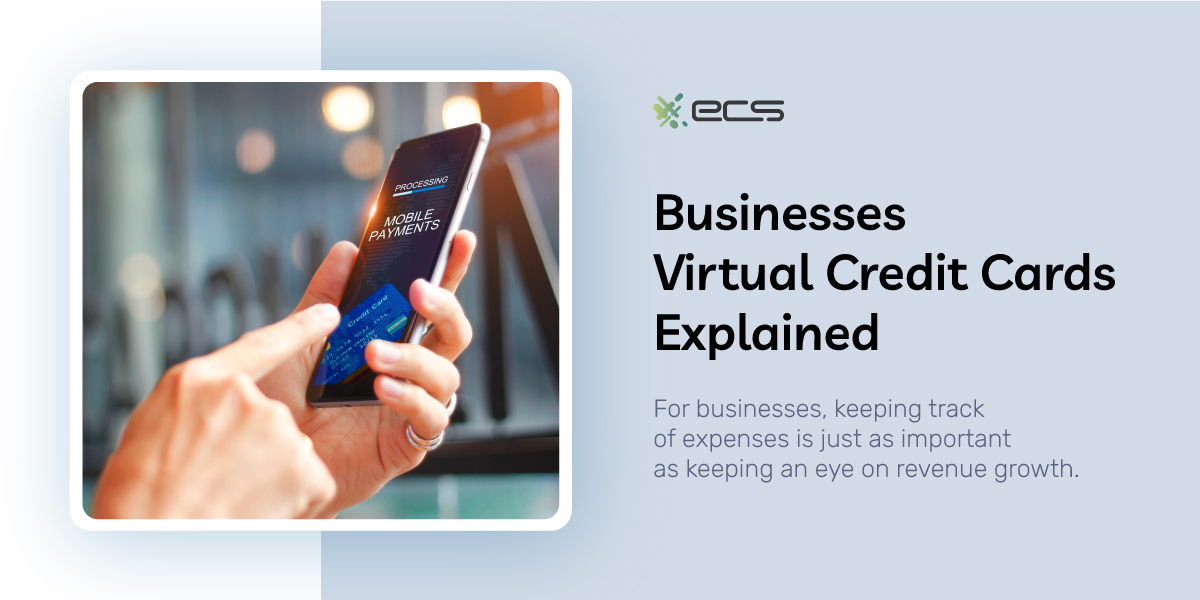For businesses, keeping track of expenses is just as important as keeping an eye on revenue growth. Every business needs a way to facilitate outgoing payments and expenses in a way that’s trackable, secure, and easy to manage.
Many businesses use checks or a business credit card. While these can work well for certain expenses, they can also be difficult to manage and track carefully in some situations.
For example, issuing each employee a business credit card when they need to travel and have expenses can lead to issues with mismanagement or incomplete tracking of funds. Security issues can also occur if a card number is lost or compromised. This means wasted time having the fraudulent charges reversed and then re-issuing cards to the affected employees.
This is where virtual credit cards come in. A virtual credit card offers businesses an alternative that fills the gaps left by traditional business credit cards, checks, or other outgoing payment methods.
Below, we’ll explain everything you need to know about virtual credit cards and how they can benefit your business immediately.
What Is a Business Virtual Credit Card?
You can use a business virtual card just like a physical credit card, but it only includes a credit card number and other information related to credit card verification. The card is 100% virtual; no physical card is attached to the number.
You can utilize a virtual credit card online or via the phone. However, a virtual card number won’t work for in-person transactions, such as at a restaurant or gas station.
However, you can use virtual company cards in person if you connect them to a digital wallet. This method lets you use a virtual card number for in-person physical transactions.
You can generate virtual card numbers and delete them as needed. For example, you could create a virtual card number to complete a specific purchase.
Once you complete that purchase, you can retire the number, rendering the virtual corporate card unusable and unchargeable.
This is just one example, but you can set up virtual credit cards to have various parameters and credit limits attached to them. This helps you control spending and limit the risk of fraud or excess charges when dealing with new vendors.
It’s important to note that each virtual credit is not a new line of credit. Instead, each card uses a single line of credit for the corporate credit card number issued under it. Interest rates and other terms are based on the original account, not the individual cards generated.
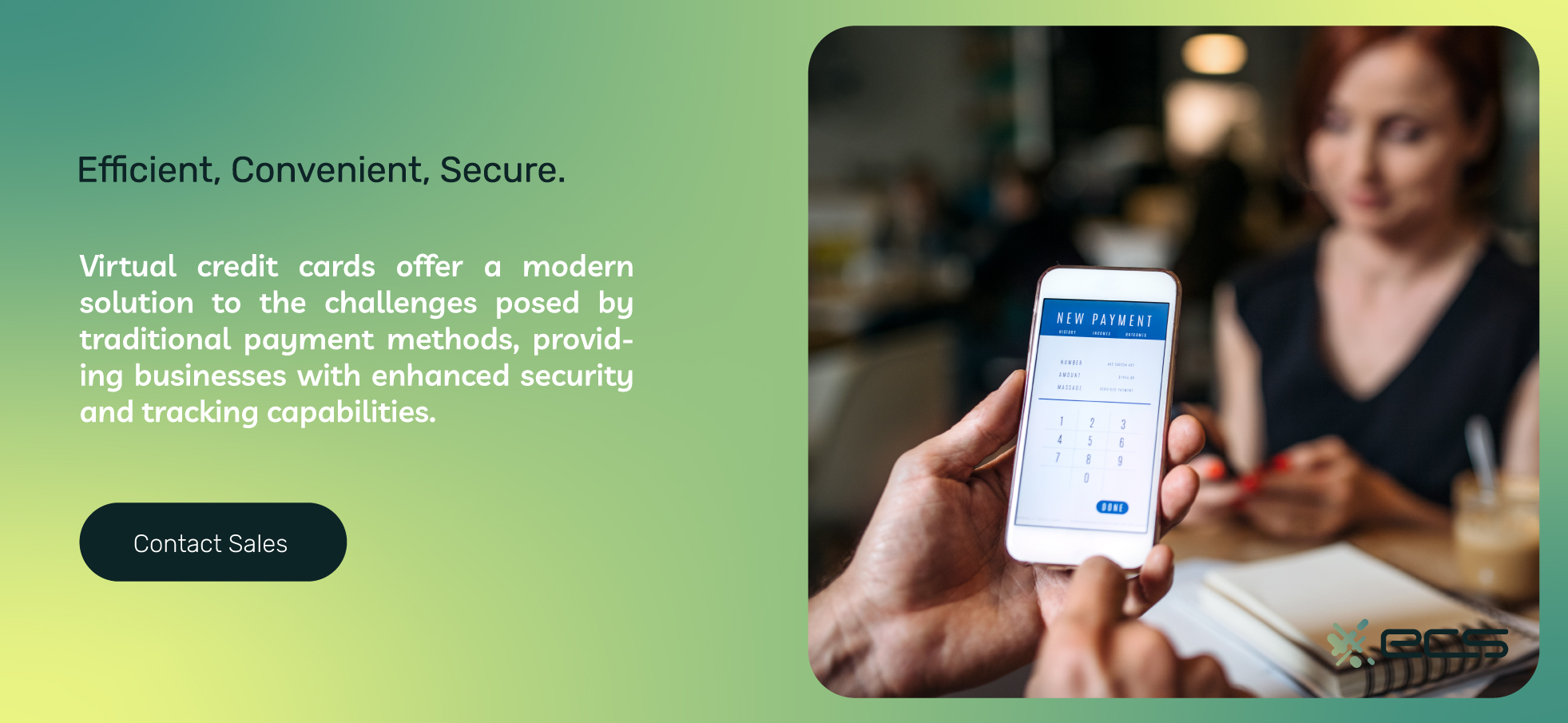
What Information Does A Corporate Virtual Credit Card Have
Virtual credit cards contain the following information:
Credit Card Number
This is a one-time number based on the card network being used, such as Visa, Mastercard, or American Express. It has the same format as other credit card numbers.
Expiration Date
The system automatically generates the expiration date when generating the virtual card number. You can use this date when placing orders online or via the phone.
CVV
The CVV is the 3-digit number usually located on the back side of a physical credit or debit card. The system generates this number along with the card number. A CVV number is used for fraud protection purposes.
Are Virtual Cards Safe?
Yes. Virtual cards allow businesses to mitigate their risk of fraud and unauthorized purchases on corporate accounts.
How Do I Generate a Virtual Credit Card Number?
Most businesses will use a service provider that gives them access to virtual credit card generation.
You’ll first want to research several virtual card providers to find one that provides the specific features you need. For example, offering tools to limit specific purchases or integrations with your accounting and bookkeeping software.
Once you choose a provider, you must apply for a business account. This is similar to any other financial application, and you’ll need to submit your business registration information, EIN, and possibly some basic financial information.
Once approved, you can begin generating virtual credit numbers through the provider’s software or your own accounting software if you integrate the two applications.
You can generate virtual card numbers instantly and do it 24/7. They are perfect for last-minute expenses or unexpected payment scenarios requiring special care to ensure security and transparency.
Benefits Of Using A Business Virtual Credit Card
Every business will have its reason for using a virtual credit card. However, there are certain benefits of virtual cards that nearly all businesses can enjoy when using these payment tools.
Lower Fraud Risk
Using virtual cards greatly diminishes the chance of fraud. In some cases, you can remove the risk of fraud entirely if you use one-time card numbers with other limitations. For example, some virtual card numbers allow you to limit them to specific payments or amounts.
If you use these additional security features, you can remove most of the risk involved when using a business credit card. This includes a data breach or other security issue where a number is compromised during online payments.
Generate Card Numbers Instantly
If an employee needs to book a last-minute flight to see a client, there likely isn’t enough time to issue a physical credit card. But with a virtual card, your employee can have a card instantly to arrange their travel plans.
Virtual credit cards are a great way to manage expenses for employees who travel or work out of the office.
Lower Your Risk With Recurring Payments
So many business tools today are only available as software as a service (SaaS). In some ways, this is convenient. However, a contract disagreement can lead to continued billing even after you attempt to cancel.
Virtual credit cards enable the generation of a new number for each recurring billing service you use. If there is an issue or disagreement, you can suspend that card number and stop any unwanted billing.
Easy Accounting
Accounting departments dealing with complex expense reports can benefit from virtual card numbers.
You can issue individual virtual card numbers to specific project teams, departments, and individuals. Issuing virtual cards like this is much faster and easier than procuring and tracking physical cards.
Most virtual card services can integrate with your existing accounting software to make things even easier.
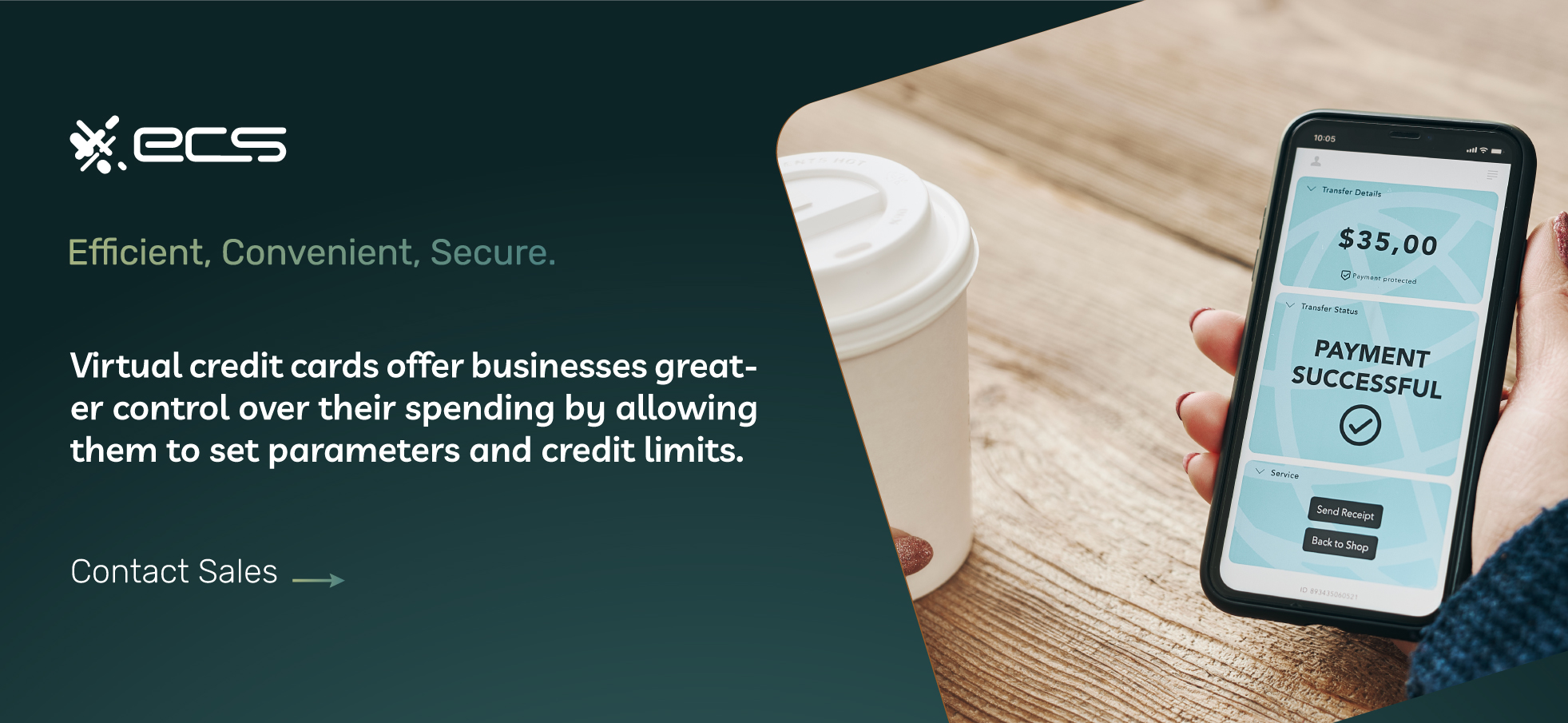
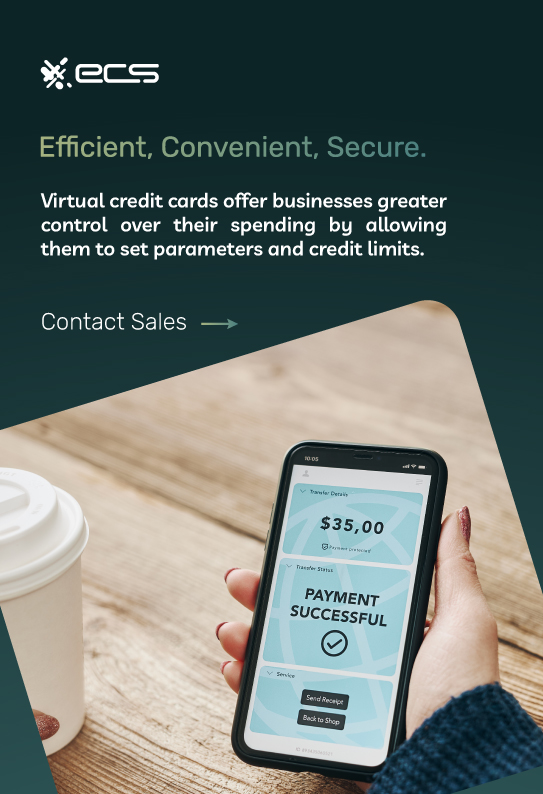
Specific Use Cases For Virtual Credit Cards
Below, we’ll outline some common uses for business virtual credit cards.
Online Purchases
If you have a new vendor or an overseas vendor to whom you don’t want to disclose your full credit card and bank details, a virtual credit card is a great solution.
With global supply chains, it’s not unusual to deal with many overseas intermediaries when sourcing products or raw materials. You may not always have a relationship with these entities, and sharing your full credit card details is risky.
Creating a single virtual credit card for shopping online can alleviate any worry and allow you to work with more vendors and suppliers without the risk of fraud or giving up excessive personal information.
Employee Business Travel
Employee travel is one of the more challenging expenses to track for your business. Keeping tabs on expenses can be time-consuming for both the employee and the member of your accounting or HR staff who needs to confirm them.
With a virtual credit card, each employee can use their assigned credit card number to book travel and other expenses. Your accounting department has a much easier job confirming expenses, and there is no need for reimbursements.
Virtual business credit cards are also perfect for last-minute travel since you can generate them instantly when needed. They are also easier than managing a physical credit card account for each employee.
Control Service Overages
Some business services, such as hosting or SaaS products, can have high overage charges built into the contract or user agreement.
You can control these using a virtual card number with a set spending cap. If you encounter any unexpected overages you disagree with, you can contact the vendor before they charge you to find a solution, ensuring your protection.
This can be especially true when certain vendors use deceptive practices you aren’t aware of until an unexpected overage charge or service fee appears on your statement.
Another use case for setting caps is when buying digital advertising. Many digital ad platforms charge per click, and the price can fluctuate wildly. Setting a cap can protect you from unexpected overages due to a system malfunction or other errors with the ad platform.
Overall, controlling business spending and setting spending limits are key benefits of virtual credit cards.
One-Time Uses
A virtual credit card is a smart option if you have a business emergency and need to make a one-time payment to a vendor.
You can configure your virtual credit numbers to expire after a single use. This feature ensures that you never have to worry about unexpected charges or other issues after you make your payment.
Recurring Payments
We touched on this earlier; recurring payments are another area where your business can benefit from using a virtual credit card.
Some recurring payments can be difficult to stop and require you to go through a chargeback process with your issuing bank. This is time-consuming, and sometimes, it may not even work to stop the recurring payments.
Even if the bank issues you a new physical card, the business can often transfer recurring payments to the new card.
A virtual card number eliminates this problem and gives you leverage if you feel your user agreement with a vendor is unfair.
Downsides Of Virtual Credit Cards For Business
Virtual credit cards can offer your business many benefits. However, there are also some downsides you should consider to ensure you don’t use virtual cards in an unfavorable situation.
It Doesn’t Work In-Person
Virtual card numbers will not work for face-to-face transactions.
In some cases, you can connect a digital wallet, such as Apple Pay, to a virtual card number. If the retailer supports your digital wallet, you can then use the digital wallet to make payments at physical retailers.
Integration Time
To get the most out of virtual credit cards, you’ll need to do some research and spend time integrating the service with your other business software.
Depending on the complexity of your business software and technology infrastructure, this can incur a cost if you need to hire someone to perform this for you.
You also need to train your employees on the usage and issuance of virtual credit cards. Some vendors can help you with this, but it is still something you should consider and allocate time for.
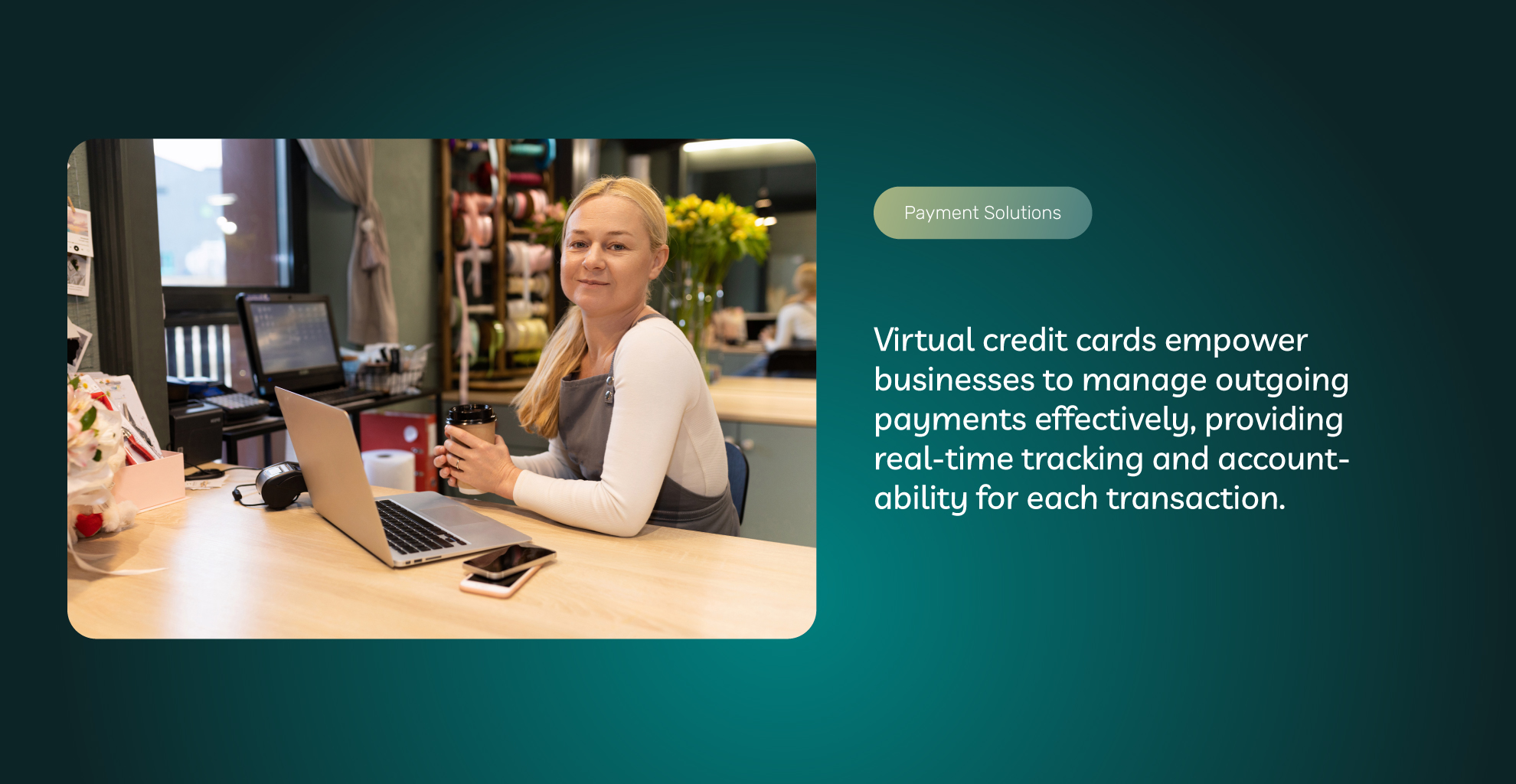
No Perks Or Benefits
Many physical business credit cards come with perks or benefits. For example, cash back for purchases or special treatment at hotels, airports, or during a car rental.
Most virtual credit cards do not offer these perks and benefits. If you enjoy a specific benefit from a business credit card, you should continue using that card when appropriate and not replace it with a virtual card number.
Additional Service To Manage
While using a virtual credit card provider helps you streamline your expenses, it also adds an additional service you must manage.
In an era where every tool a business uses feels like a subscription, adding one more service to manage may seem inconvenient.
Make sure you carefully weigh a virtual card’s pros and cons beforehand so that your implementation of virtual credit cards will be a net positive for your bottom line.
More Information On Payment Solutions
ECS Payments is a leading provider of payment solutions to businesses of all sizes. We can help your business leverage the latest technology and innovations to increase revenue and reduce processing costs.
Contact ECS Payments today to learn more about virtual payment systems and other technologies designed to improve your business.
Frequently Asked Questions About Virtual Credit Cards for Businesses
A virtual card is a fully digitalized alternative to traditional credit cards, providing an altered credit card number and related details for online or phone transactions. It enhances security, trackability, and expense control for card-not-present transactions. Virtual cards can be generated and deleted as needed, with customizable parameters and credit limits.
A virtual card includes a one-time credit card number that follows the format of established credit card networks, an expiration date, and a CVV. Each virtual card utilizes the terms of the original account; it does not create a new line of credit.
Yes, virtual credit cards are safe for businesses to use and accept. Using one-time card numbers and the additional security features of virtual credit cards significantly reduces the chances of data breaches and fraudulent activities associated with traditional credit cards.
Virtual credit cards are designed solely for online or phone transactions. However, digital wallets support virtual cards and also randomize one-time card numbers for in-person transactions.
